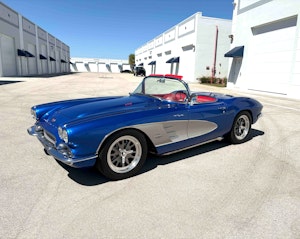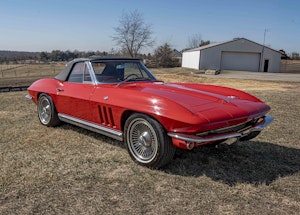Media | Articles
Piston Slap: What’s in a matching number?
Ed writes:
When they say that numbers match (I see this in ads for older cars for sale), what numbers are they referring to and where do you find them? I recently bought a 1971 Ford 250 Camper Special pickup and would like to check.
Sajeev answers:
We probably said it best here: “Matching numbers is a term that car collectors use to describe a car on which all the parts – body, engine, rear axle – have proper factory serial numbers.” But where do you find these numbers? That’s a little tougher question to answer, as things are not the same between various manufacturers.
Most automakers stamp the engine with a code, which may or may not be unique to the vehicle it “married” at the factory. While it’s true for Corvettes (above), the same is not applicable to your Ford truck: You might find a data tag or unearth a stamping, but that will only go deep enough to show when the engine was built and for which vehicle it was originally intended (i.e. 460-powered Lincolns had unique cylinder heads for a while). So it’s a fair bit easier to make the numbers match for Fords.
Marketplace
Buy and sell classics with confidence
The body often possesses both a VIN (usually behind the windscreen) and a chassis tag (usually on the cowl or radiator core support) with data relevant to a “numbers matching” designation. The rear axle often has stampings on the case or a tag sandwiched between the rear cover and one of its attaching bolts. Most American manufacturers have breakdowns of the codes that explain all this data, but Ford owners can get most of it with a click of a few buttons at Marti Auto Works.
Generally speaking, brand-specific forums and car clubs will help you determine if your vehicle is numbers matching, but the investigation can get tricky with more limited-production automakers who generally feel less need to leave a paper trail. Here’s where things get dicey: Just like other technical terms in the classic car business, “numbers matching” is thrown around so much that it’s hard to believe without third-party verification. And sometimes that verification is very difficult/expensive to procure.
But in your case? Your 1971 Ford is easily covered with a Marti report and a little searching for codes on the engine/axle/body that match what’s on that report. Happy hunting!
Have a question you’d like answered on Piston Slap? Send your queries to pistonslap@hagerty.com, and give us as much detail as possible so we can help! If you need an expedited resolution, make a post on the Hagerty Community!










